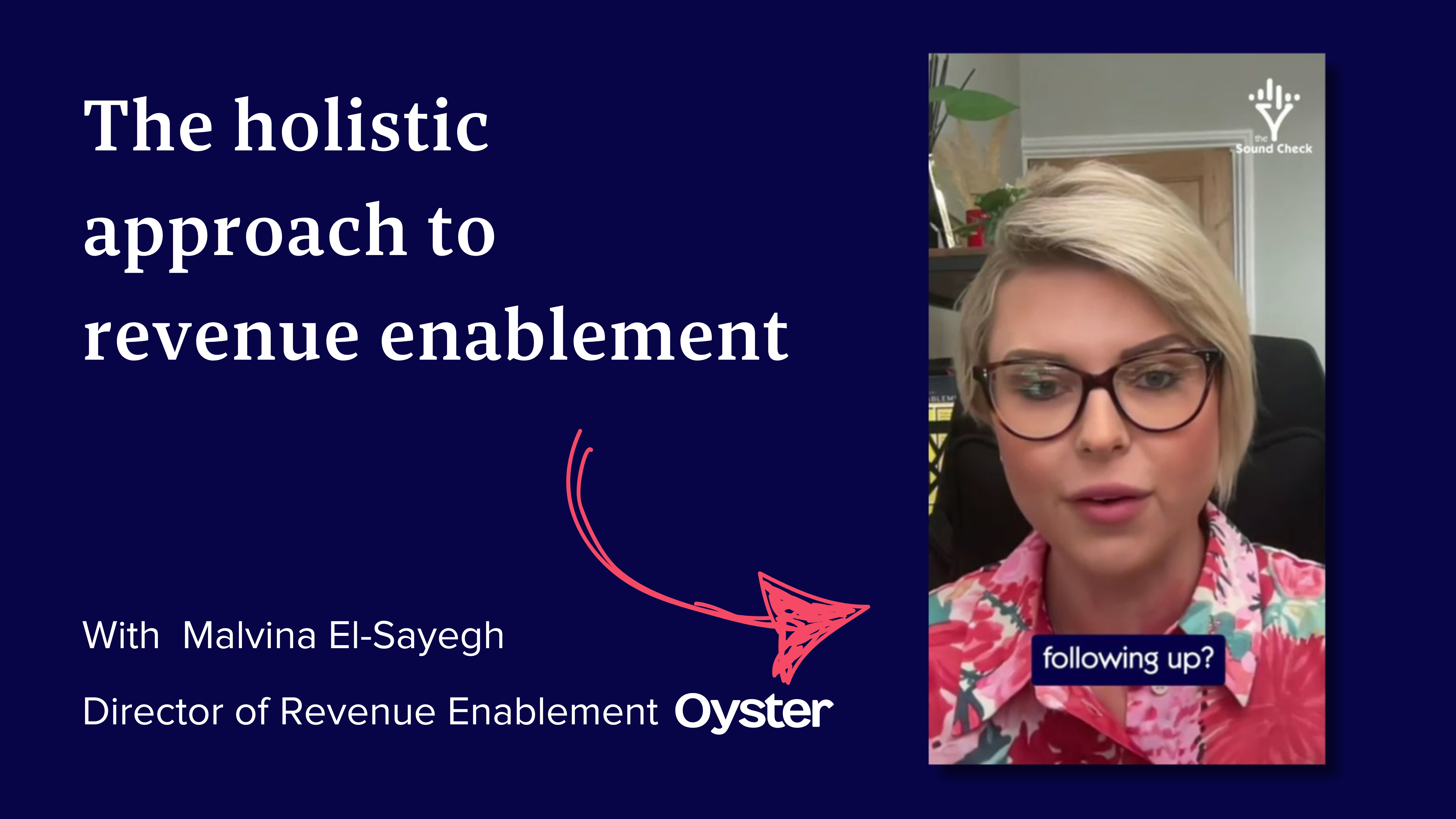Revenue enablement isn't just about getting a prospect to sign on the dotted line. It’s about the entire customer journey—before, during, and long after the sale. As Malvina El-Sayegh, Director of Revenue Enablement at Oyster, puts it:
"We all know it doesn’t stop or finish when the customer signs on the dotted line, right? Because you can sign a customer and they can churn a year later. And well, that’s not really great."
This highlights a crucial reality in modern sales. Success isn’t measured by closed deals alone—it’s measured by long-term customer success and retention. That’s why a true enablement strategy must extend beyond the sales team to customer success, account management, and beyond.
Why a holistic approach matters
Looking at sales through a holistic lens means considering every interaction a customer has with your business. Malvina explains that sales enablement should ensure a seamless transition from initial outreach to onboarding and ongoing engagement:
"I always have this approach... looking at sales from a really holistic lens, not just from that first outreach, but all the way through when they’re engaging very closely with the account management team or the customer success team and really making sure that they’re successful."
Without this approach, companies risk high churn rates, inconsistent messaging, and a disjointed customer experience.
The challenge: Bandwidth & prioritisation
One of the biggest struggles for revenue enablement professionals—especially in small teams—is deciding where to focus their efforts. With so many potential gaps to fill, it’s easy to get overwhelmed. As Malvina points out:
"A lot of enablement practitioners out there, it’s a one-man, two-man team. I think it really boils down to prioritising and really seeing what you can focus on today that will have the biggest impact."
Enablement teams must be strategic. Instead of trying to fix everything at once, they should focus on high-impact initiatives—whether that’s refining the discovery process, improving onboarding, or ensuring sales teams have the right follow-up resources.
Final thoughts
Sales enablement is about more than just closing deals. It’s about creating a seamless, successful customer journey—from first touch to long-term retention. As companies continue to scale, the role of enablement teams will only become more critical. The key? Prioritisation, collaboration, and a relentless focus on delivering value at every stage.








![How to Get Started with Buyer Enablement [With Examples]](https://cdn.prod.website-files.com/65cf4fecbed2754c2236665d/65cf4fecbed2754c22366bdb_65a5af83e742f76e34ce06f3_Customer%2520Onboarding%2520_%2520Everything%2520you%2520need%2520(2).png)


.png)












.png)

.png)



.png)


.png)
.png)


